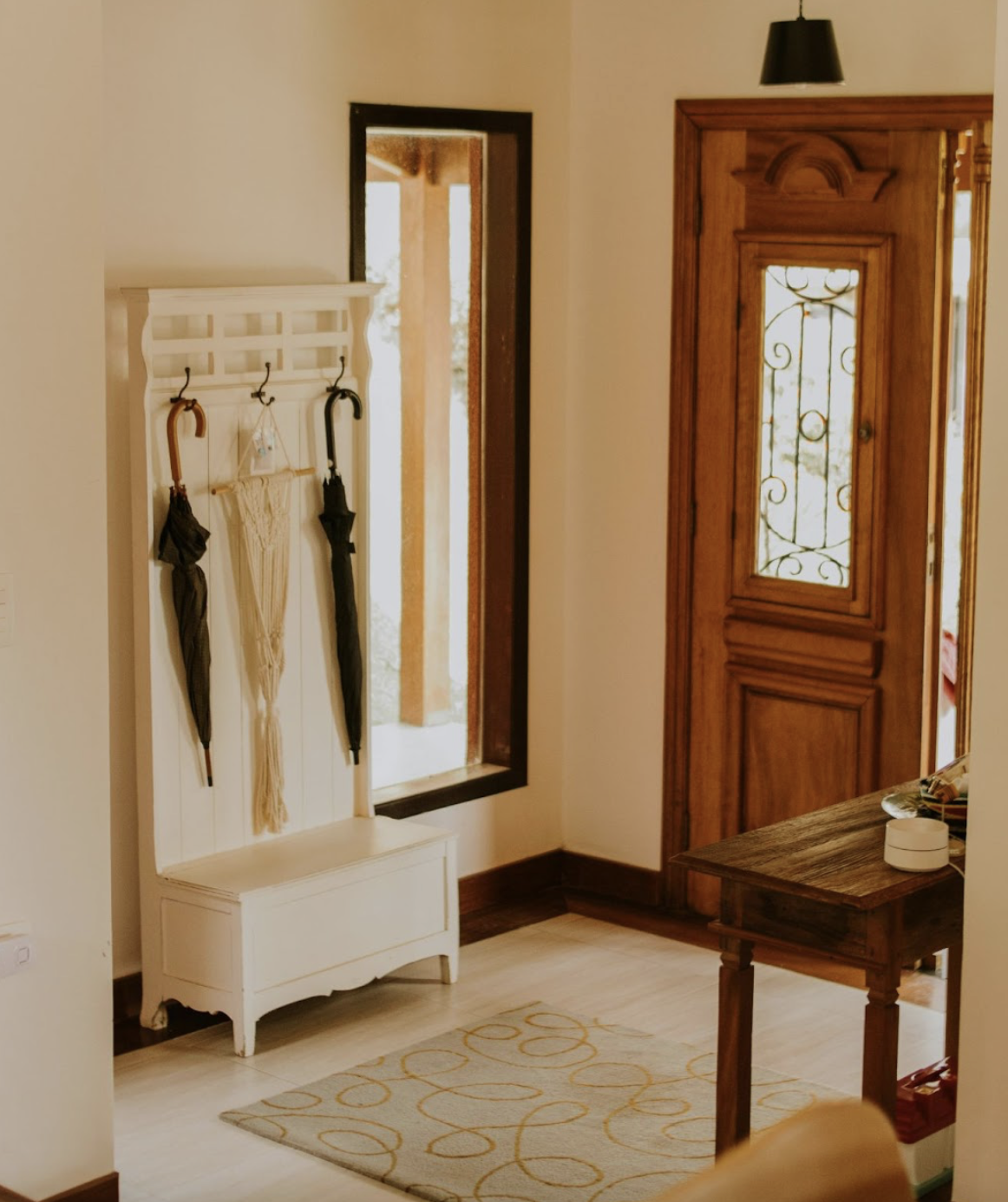How To Bring Warmth To Each Room In Your Home
There are lots of ways to combat the winter chill in your home. Below is a room-by-room guide on how to make your home warmer and more snug.
Living Room
The living room is where we spend most of our downtime. Keeping this space warm is essential for making it a relaxing and welcoming space. A few ways to bring warmth to this room include:
Sofa throws
Sofa throws are great for covering up leather sofas, which can get cold in the winter. Combined with cushions, this extra blanket layer also brings a sense of visual warmth to your living room. Throws also have the benefit of protecting your sofas from damage and stains if you have young kids or pets.
Living room rug
Adding a large rug to the floor of a living room can make the space feel more snug. A deep pile rug is particularly satisfying to sink one’s toes into. You can color coordinate this rug with cushions and curtains.
Winter curtains
Stop heat from escaping your living room window by hanging up some thick winter curtains. These should ideally be floor-length in order to provide an effective barrier. These can be taken down and replaced with lighter curtains in the summer.
New windows
Living rooms often have large windows, which can help let in light but also encourage heat loss. If you have old windows, it’s likely that they’re not very energy-efficient. Consider installing some new windows such as these energy-efficient Renewal by Andersen windows.
Bedroom
A cold bedroom can negatively impact sleep quality. If you’ve been waking up chilly at night, consider a few of the improvements to make your bedroom warmer and cozier.
Flannel sheets
Flannel sheets are often made from thick cotton or wool and can help to trap in heat, keeping you warmer while you sleep. It’s worth switching to flannel bed sheets and duvet covers in the winter months, and then switching back to regular sheets in late Spring.
Thermal mattress topper
You can also warm up your bed by buying a thermal mattress topper. This provides a thick blanketed layer on top of your mattress that stops heat escaping downwards.
Bedroom rug
Adding a rug to your bedroom floor can further help to add a sense of coziness. It could be especially worthwhile if you have a wooden or laminate floor - waking up and being able to step onto a warm rug could make getting out of bed easier.
Shutters
Installing shutters on your bedroom window could help to reduce heat loss in winter. The slats of shutters can also be finely adjusted to provide the perfect level of privacy, while still letting light in.
Bathroom
Bathrooms typically contain lots of hard surfaces, which can cause them to get colder than other rooms. Fortunately, there are a few improvements you can make to keep your bathroom warmer longer - helping to make showers and baths more relaxing.
Heated towel rails
Heated towel rails can act as radiators, while also drying and warming up towels. On a cold morning, you can get out of the shower and immediately warm up with a freshly heated towel.
Underfloor heating
Underfloor heating in a bathroom can help to keep the floor warm so that it’s more inviting when you step out of the shower or the bath. This heating can also help to warm up the room more rapidly, as well as helping any spilled water on the floor to evaporate in order to discourage mold growth.
Under-tile insulation
You can also prevent heat being lost through tiles by installing an insulated backer board below the tiles. This can be placed under floor tiles or wall tiles and is best done when retiling your bathroom.
Steel enamel tub
Swapping out your acrylic tub for a steel enamel tub could also be worthwhile if you like to take long baths. Steel enamel tubs help to keep water warmer for longer by trapping in heat. Other options like copper tubs can have a similar heat-trapping effect.
Kitchen
The kitchen is the heart of the home and deserves to be an inviting place of warmth. However, some kitchens can get quite cold due to all the hard surfaces. Below are a few ways in which you can bring warmth to this room.
Kitchen rug
Rugs often have hard tile or laminate floors. Adding a rug to your kitchen floor could make it a more inviting space when making breakfast on a cold morning. Choose a rug that won’t get easily ruined by food or drink spillages.
Double pane sliding door
Some kitchens have sliding glass doors leading to the backyard. These glass doors can let out a lot of heat if they are single pane. Consider whether it’s worth upgrading your sliding door to a double pane door - this could provide added insulation and security.
Plate warmers
Keep food warmer while dishing up by serving it onto already warm plates. You can buy electric plate warmers that you can wrap multiple plates in. They’re great for winter dinner parties.
Stovetop cooking
Cooking meals on a stove can help to heat up the room. Consider hearty winter meals like soups and stews that can be cooked in a pot.
Hallway
An uninsulated hallway can let in drafts into the rest of your home. Fortunately, there are lots of ways to keep this space warm:
Composite front door
Upgrading your front door to a composite front door could provide superior insulation. Popular composite materials include GRP and LVL.
Door brush strip
Got a gap under your front door? Seal this off with a brush strip to stop drafts getting in and prevent heat escaping. Brush strips can also help to keep bugs out.
Draft-proofed internal doors
Any internal doors leading from your hallway can also be insulated. Adding foam to the inside of the door frame can create a seal that can stop air getting around the sides of doors.
Hallway rug
As with in other rooms, a rug in your hallway could help to create a sense of coziness. This could make your home more welcoming for you and your guests. Choose a hardwearing rug that can take a lot of foot traffic.
Attic
While heat does rise, attic spaces get cold quickly because they are more exposed than other rooms. Fortunately, there are many ways to keep an attic room warm.
Roof insulation
Insulating your roof from the underside can help to stop heat escaping through your roof. Most of a home’s heat is lost through the roof, so this insulation is essential if you want to keep your home warmer. This guide delves more into different types of attic insulation to consider.
Solar heating
You can link up electric heaters directly to solar panels on your roof to heat up your attic using energy from the sun. Solar panels can be used to heat up your entire home, but you may need quite a few to meet your entire home’s energy needs.
Triple-glazed skylights
Skylights are windows in the roof that can help let in sunlight from above. It’s worth choosing triple-glazed skylights to stop heat escaping through these windows. Alternatively, you can install shutters over them to trap in heat when you also don’t want light pouring in.
Insulated loft hatch door
It’s important for safety and insulation to install a door over your loft hatch. Choose a door made from a material like fiberglass to offer the best heat retention.
Conclusion
That’s most of the main rooms of a home covered. Of course, there are many other measures you can take to heat up the whole of your home such as upgrading your HVAC or furnace, installing cavity wall insulation or laying down carpets. However, for those on a tighter budget, focusing on individual rooms could be a good approach to keeping your home warm.





